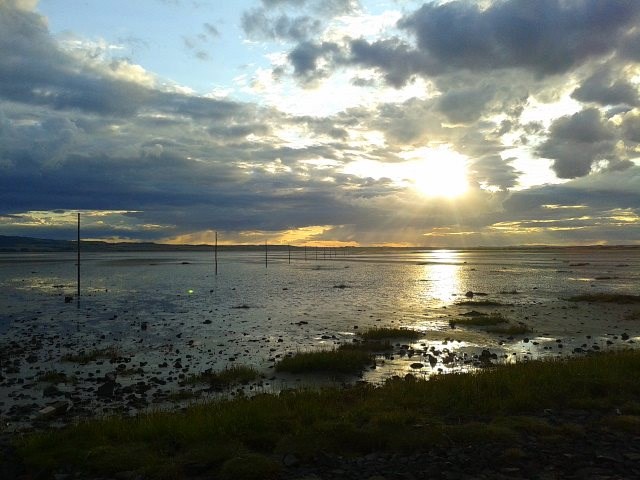The Holy Island Of Lindisfarne, quickly accessible from mainland Northumberland via the approach road off the A1 at Beal and then across the causeway at low tide, is a very popular destination for visitors to Northumberland. Perhaps it’s become something of a ‘must do’ destination which is hardly surprising considering its unusual location, natural beauty, wealth of places to visit and early Christian and Viking history. Nearly all visitors travel there by car, many by bike and, especially around Easter time, numbers of folk make the traditional pilgrimage across the sands beside the causeway on foot following the Pilgrim’s Way, a line of tall wooden poles marking the shortest route. The island is at the start/end of the St Cuthbert’s Way, Melrose in the Borders being the other extreme, another reason for increasing numbers of walking visitors- and participants in ultrarunning events using the island as a start/finish point. It can get very busy during holiday periods, irrespective of the weather, but what is surprising is that relatively few visitors seem to disperse far beyond the environs of the village on the island to be absorbed by the natural beauty of the place. This blog entry will take you on a walk which skirts the village, points out some less frequented spots and things to look out for, and guides to the island’s fantastic coastline and semi-wilderness of dune habitat.
Assuming travelling by car (by any means for that matter) the only word of caution is to pay attention to the tide tables!! Times that the causeway connecting the island with the mainland is passable or not are readily available online and on notice-boards at the mainland end of the causeway. Almost always those who get caught by the tide are unwary visitors trying to beat an incoming tide in their rush to leave. Their car becomes waterlogged in deeper water near the bridge on the causeway, they are then precariously stranded until, at considerable cost, emergency services are rallied to rescue them. They are resoundingly pilloried on social media and become part of the ongoing debate as to whether emergency service assistance should be charged to them and or their (most likely less than sympathetic) insurers. Such a situation could be the dire ending to what had been a very nice day out indeed. Don’t get into it.
Holy Island Tide Times
However you make the causeway crossing you’ll instantly be aware of the spectacular scenery as you approach from the mainland. On a clear day you’ll see the causeway ahead across the open sands and skirting the island fringe, the village and castle on the island itself, 2 pinnacle beacons, East and West Old Law on Guile Point at the end of Ross beach on the mainland to the south, the Farne Islands and Bamburgh Castle in the far distance and the wooden poles and refuge huts of the Pilgrim’s Way to your right. At sunrise, where the road bridge/Pilgrims Way cross the South Low river is a great place from which to photograph, as well as a feeding ground for all sorts of wading birds. You’re very likely to see swans looking picturesque on the river, perhaps a heron or the very beautiful little white egrets which sometimes visit.
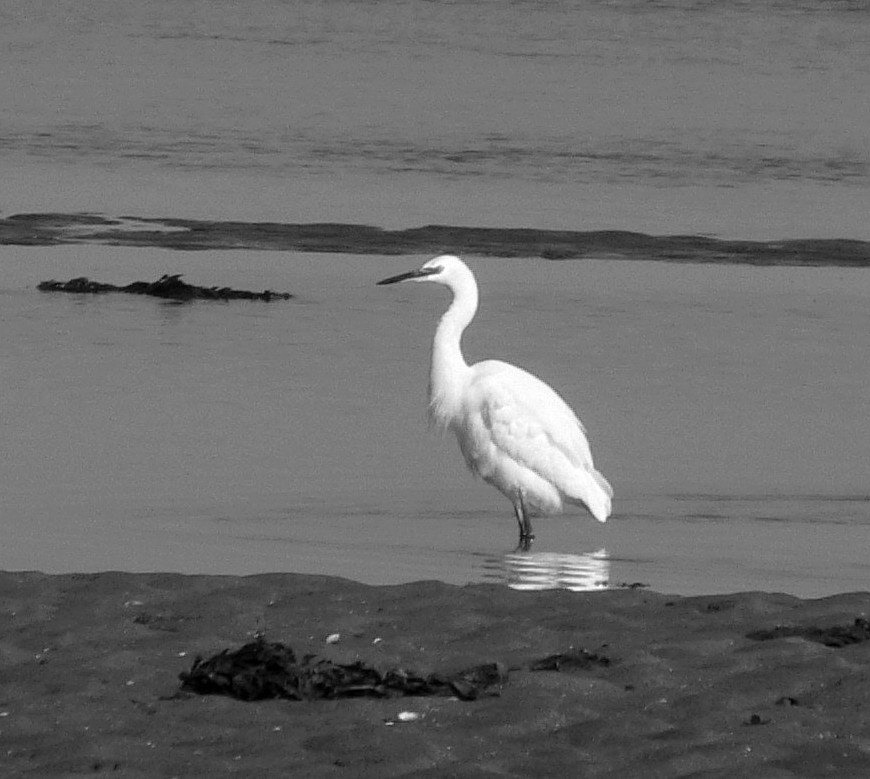
Where the causeway becomes the approach to the village of Holy Island is called the Chare Ends Road. The main (Pay & Display) car park is there on the left. There’s another P&D carpark on Green Lane. (Bear toward the village end of Chare Ends) You might be lucky and find a free spot amongst the village lanes but it’ll probably be quicker to use the designated car parks.
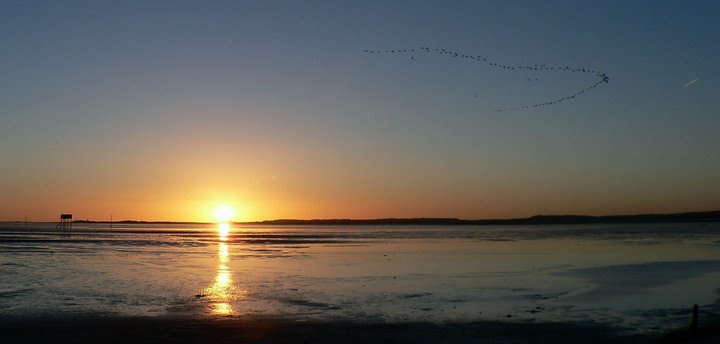
The main street on the village is called Marygate. It won’t take long to orientate yourself. A lot of visitors will be heading towards the popular sites of Holy Island Castle, the Priory and Heritage Centre, if they’re not enjoying refreshment. You’re well catered for in that respect, all the pubs and cafes offer decent food and drink. Pilgrims Coffee House & Roastery is unusual, one of Northumberland’s first coffee roasteries, where you can see the process in operation and maybe fuel up or unwind before/after your explorations. Recommended.
Begin your walk on Marygate, heading east (right) from where Chare Ends Rd meets Marygate. The Heritage/Exhibition Centre is on the left and side of Marygate as you go but you might easily miss the charming Gospel Garden on the right hand side a little further on. This is a lovingly tended little oasis of calm. Have a quick look! At the top end of Marygate head left along Fiddlers Green. The cottages to your right are the eastern fringe of dwellings on the island and overlook Fenham Flats, which become flooded with the tides, and the mainland. Seal colonies congregate on sandbars on the Flats at low tide. If it’s a still day, or especially with a light westerly breeze, you’re likely to hear the peculiar tones of them ‘singing’ together. Further on, past St Mary’s Church on the left (well worth a look around) where the road becomes a track and wends down toward the shore, you might see the seals out there with a keen pair of eyes or binoculars.
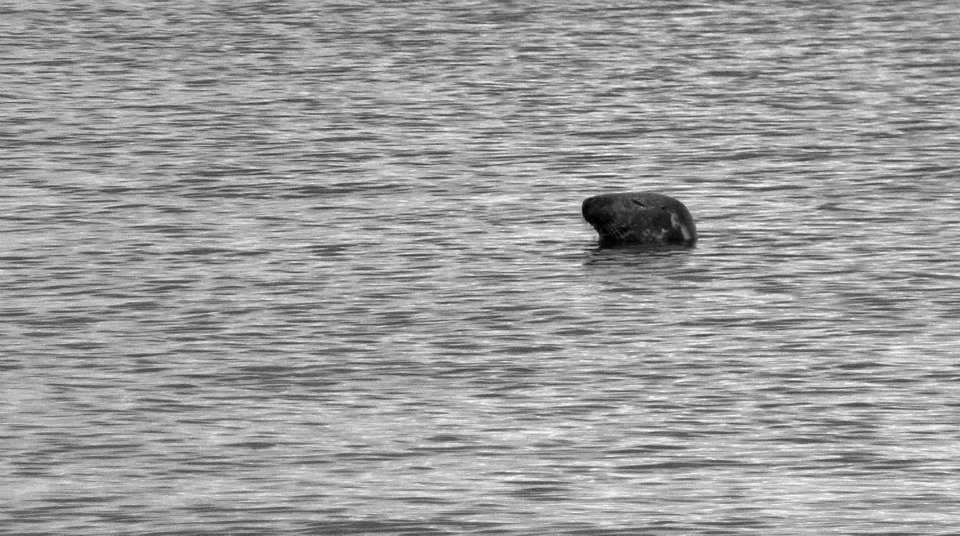
At the shore you’ll see St Cuthbert’s Isle straight ahead, a small islet where the saint got away from the madding crowd and lived as a hermit. A cross stands on the isle and the ruins of a dwelling. You can walk to it at low tide but don’t use the causeway tide-tables as a guide to the encroaching tides because the water fills in here quite a while before the causeway becomes impassable. Keep an eye out! To the right on the shoreline an old lifeboat station has been turned into an interesting little museum/exhibition (Free entry) about the history of the lifeboat service in the area. To the left- the direction in which to continue your walk with a careful climb up the pathway onto the small cliff- you’ll see a lookout tower. The view from up on the small cliff or from within the lookout tower is one of Northumberland’s finest. Signs in the tower indicate the various landmarks on the horizons, most notably the Guile Point beacons at the end of the long sweep of Ross Sands immediately to the south, Bamburgh Castle & the other Farne Islands further to the south and Cheviot Hills to the west.
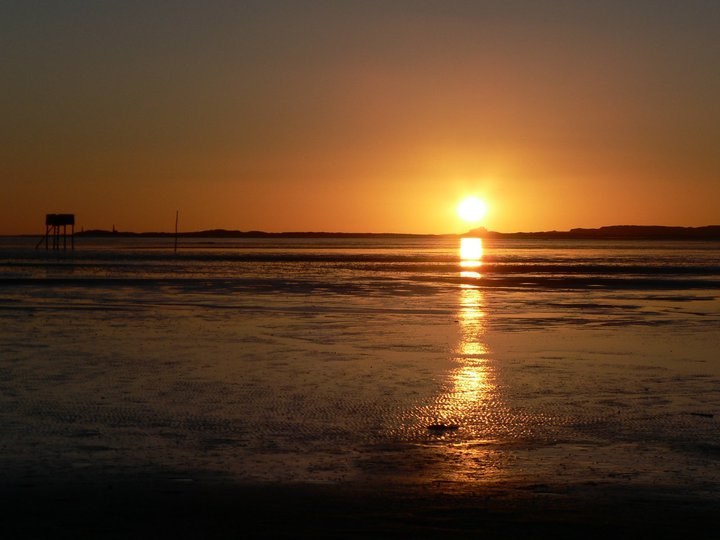
After the lookout, continue along the cliff path in the direction of the castle to the east. The path dips and comes out by the fisherman’s huts at the harbour. Holy Island still has a small population of working fishermen. The Herring Houses, dwellings closest to the harbour and bay, are a reminder of what was once the major industry in many coastal areas- herring fishing and processing. A community devoted to the herring harvest would have lived in the cottages and carried out much of their work in the cobbled courtyard within the quadrangle formed by the buildings. Observe the use of old boats to form sheds, another fishing community tradition. You’ll see some at the bay fringe amongst dry-docked boats.

Have a look inside the modern slate and wood building just by the roadside near the bay. This is a relatively new visitor centre dedicated to the natural history of the island and with a viewing window over some natural wetland. Then continue your walk along the road toward the castle. Skirt the castle on the pathway just to the north. You’ll see and can look in on the little walled garden created by famous British horticulturalist Gertrude Jekyll in 1911 for the editor of Country Life magazine at the time, Edward Hudson. Before long, walking along one of the island’s old waggonways and under a small bridge, you’ll be at the island’s eastern shores and an interesting stretch closest to the castle where visitors create rock stacks, cairns and artwork with the rounded stones and pebbles in abundance thereabouts. A detour south from here takes you to the very well preserved lime kilns at Castle Point dating from 1860.
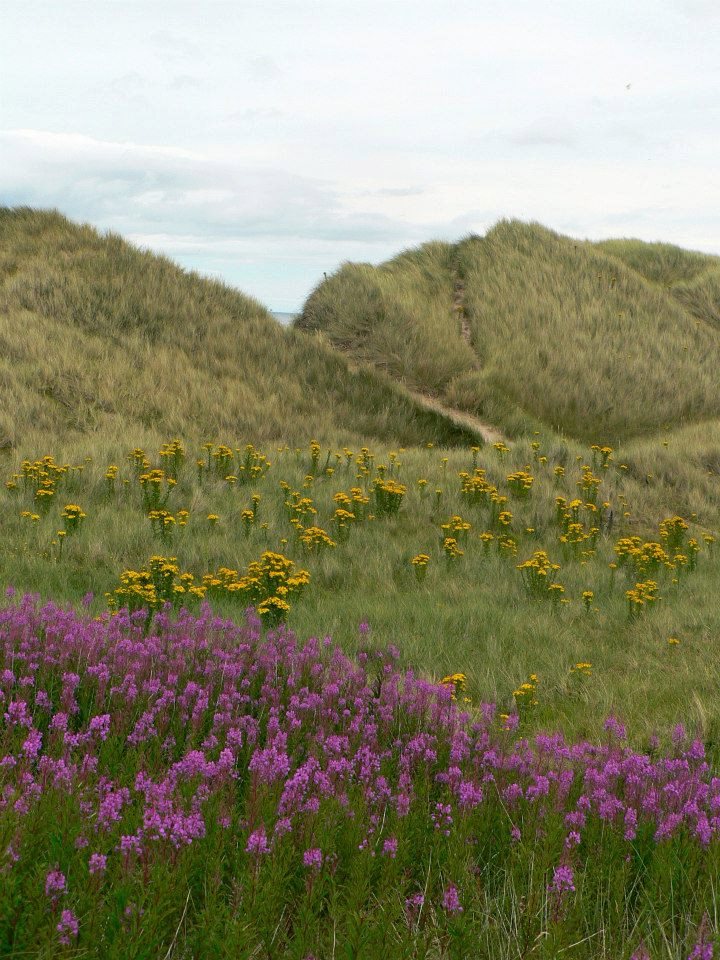
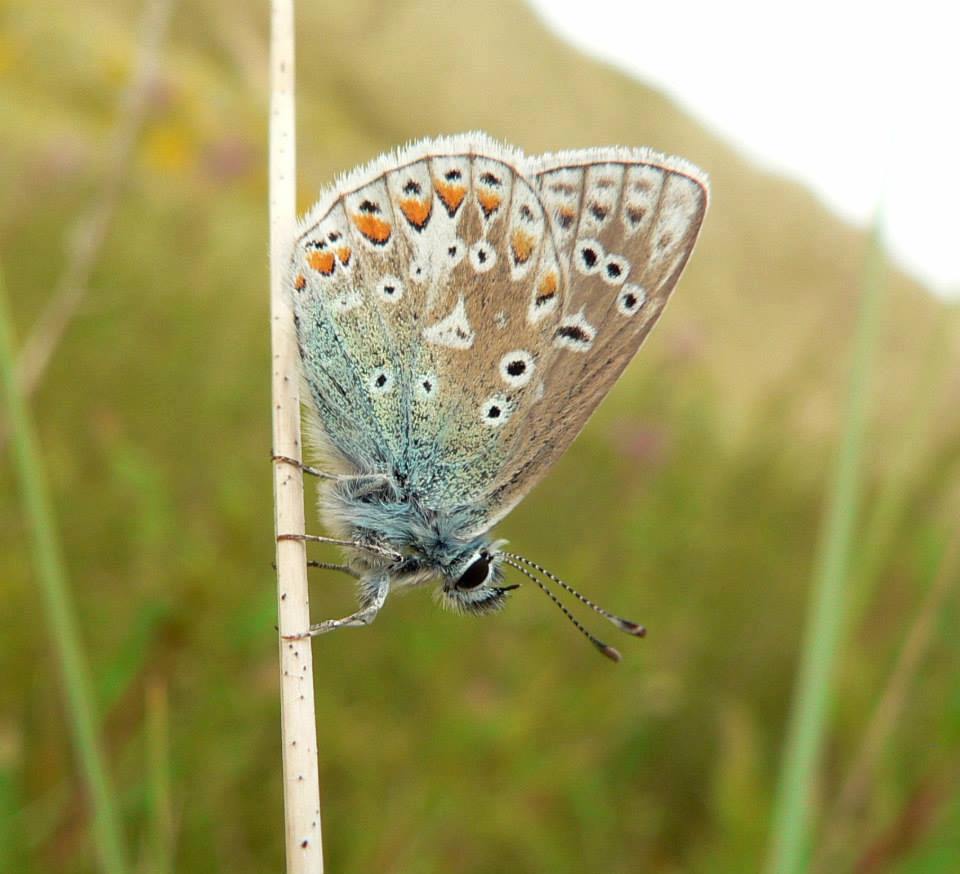
Continue northward from the vicinity of the castle along the grass path that follows the rugged shoreline. With a North Sea swell running there can be splendid surf and waves peeling from the various points and across the boulder reefs. You’ll eventually reach the distinctive white beacon at Emmanuel Head, the most easterly point on the island. Built between 1801-1810 and possibly the first daymark beacon in the UK, its purpose was to mark Emmanuel Head as distinct from another rocky point with similar features where boats often ran aground trying to locate a deep channel giving safe passage to the island.
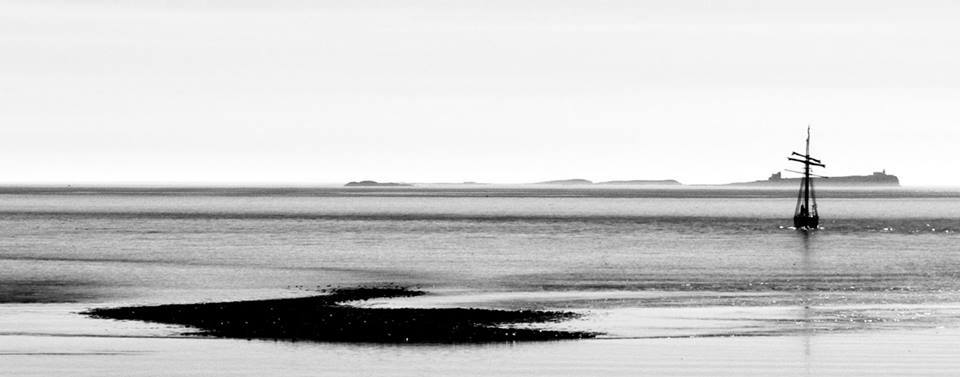

From Emmanuel Head you have good options to extend or curtail your walk. You’ll have covered about 2.5miles so far. Backtracking from Emmanuel Head for 200m or so you’ll come to the wall which marks the perimeter of the farmland on the island. Following that on the path in a westerly direction you’ll come to a gate at the end of a lane to the left. Follow that lane directly back to the village where you’ll find yourself emerging at St Coombe and Beblowe Farms. A circuit of approx 4miles in total. The scrub and dune land north of the farmland to the island’s north shore is a fantastic area of peaceful wilderness though and well worth a meander amongst. It’s bright with an abundance of flora in the Spring and Summer months and alive with other wildlife too, notably birds and butterflies. You can skirt this area by simply walking the pathways closest to the shoreline onward and westward from Emmanuel Head. Doing so you’ll come across the secluded and most likely deserted Sandham Bay and then Caves Haven Bay before reaching the wide open beaches of the north shore with a huge vista northward towards Goswick & Cheswick Sands, Cocklawburn Beaches and Berwick. Keep following the dune fringes and eventually there’s a sandy track across the narrowest point of the island, known as The Snook, between the north shore and a car-park by the causeway road. Cutting through the dunes here and walking back to the village beside the causeway road and along Chare Ends you’ll have covered a distance of approx 6.5miles. If you extend further and follow the shoreline right around Snook Point and then back along the road, rather than cutting through at The Snook, you’ll have covered a distance of about 8.5miles.
This route can be downloaded in the following formats GPX, KML, TCX, FIT, JPG, GIF, PNG, PDF. (click the button below to download):
